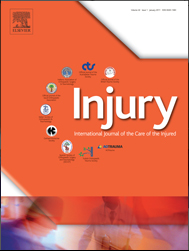
TRAUMA
Shoelace technique for leg fasciotomy is both time and cost effective
Injury. 2014 May;45(5):890-3. doi: 10.1016/j.injury.2012.02.002.50 patients with acute compartment syndrome stemming from leg fracture and/or blunt injury undergoing leg fasciotomy were randomized to wound closure through either vacuum-assisted closure (VAC) or the shoelace technique. This study aimed to compare wound outcome, time to closure, and complications between these treatments. Results indicated significantly shorter time to wound closure, and significantly lower daily costs with the shoelace technique compared to VAC. Fasciotomy wound length and incidence of wound infection were similar, and there was a non-significant trend indicating a reduction in the need for additional split thickness skin grafting in the shoelace technique group.
Unlock the full ACE Report
You have access to {0} free articles per month.Click below to unlock and view this {1}
Unlock NowCritical appraisals of the latest, high-impact randomized controlled trials and systematic reviews in orthopaedics
Access to OrthoEvidence podcast content, including collaborations with the Journal of Bone and Joint Surgery, interviews with internationally recognized surgeons, and roundtable discussions on orthopaedic news and topics
Subscription to The Pulse, a twice-weekly evidence-based newsletter designed to help you make better clinical decisions
Exclusive access to original content articles, including in-house systematic reviews, and articles on health research methods and hot orthopaedic topics
Or upgrade today and gain access to all OrthoEvidence content for just $1.99 per week.
Already have an account? Log in


Subscribe to "The Pulse"
Evidence-Based Orthopaedics direct to your inbox.
{0} of {1} free articles
Become an OrthoEvidence Premium Member. Expand your perspective with high-quality evidence.
Upgrade Now












































































